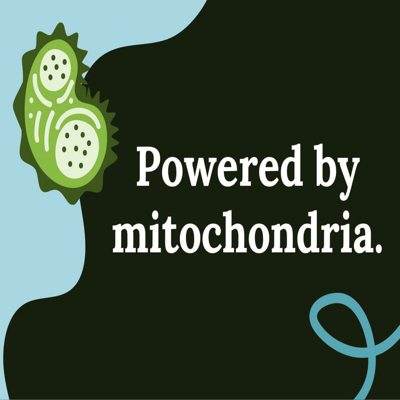Muscle cell respiration is so named because it takes place within the muscle cells. First, glucose is released from glycogen, which has been stored within the muscle or supplied from the Liver. The body then relies on either aerobic or anaerobic cellular respiration to transform the glucose in the molecule ATP, which as you already know is the molecule that actually provides energy needed for muscle contraction.
This post looks at the detail associated with energy systems, muscle contraction and how we power our running… in a lot of detail. If you want to understand the science (physiology) then grab a tea and take a seat.
Mitochondria
Aerobic cell respiration takes place within mitochondria, making them the workhorses of the cell and vital to our performance as runners. These structures can increase in number and size with endurance training, improving our aerobic cell respiration efficiency.
Capillaries
These are the small branches of blood vessels which deliver both oxygen and nutrients to the individual cells for aerobic respiration. Endurance training increases capillary density and function, which improves muscle endurance performance.
To a large extent, when we focus on “Base Training” to increase our “Aerobic Engine” what we are really describing is a training protocol that is trying to increase mitochondria and the capacity of our capillaries in the running muscles.
Aerobic & Anaerobic Respiration
In aerobic cell respiration, the body uses oxygen to convert glucose into ATP. During strenuous exercise, if there is a shortage of oxygen (due to inadequate delivery or high rate of use), the body will rely on anaerobic respiration. While this process does not require oxygen, it does cause lactate accumulation. Far from being a metabolic waste product, lactate provides a valuable energy source once sufficient oxygen is available again (for instance once our pace slows down again or the terrain becomes easier). The issue with lactate is that it causes a burning sensation in the muscles and induces fatigue, so anaerobic cell respiration is a time limited energy system.
Endurance Running
Aerobic respiration has tremendous energy-yielding capacity and, as a result, is the primary form of energy production (energy system) during endurance running. In this energy system we can generate approximately 38 ATP molecules of energy from one molecule of glycogen. This gives us a sense of the efficiency of this energy system.
Speed Running
Anaerobic respiration does not require the presence of oxygen. However, this energy system produce only two ATP molecules per Glycogen molecule, creates a build up of lactate and is only capable of supplying energy to support maximal efforts for up to (approximately) two minutes.
As you start to appreciate, understanding how energy is produced and the kinds of work load that different systems support is very important when we consider the best training to be spending our time on. It is also important to consider how each energy system functions and the kinds of adaptions that we can aspire to stimulate. This informs our diet, fuelling, recovery and training session design. Pretty fundamental.
With that in mind, let’s take a look at a couple of other terms that are often used and ensure that we understand how they energy system concepts.
Lactate Threshold
During steady-state (Endurance) exercise, aerobic cell respiration largely matches the needs of our running muscles. However, in the real world, steady-state is interrupted by hills, the need to accelerate or temporarily run faster for whatever reason. When intensity increases beyond the capacity of aerobic respiration, blood lactate accumulation begins to rise exponentially. Your Lactate Threshold (LT) represents the highest intensity your body can deliver before Lactate accumulates exponentially. Your LT significantly contributes to your distance or endurance running capacity because it reflects the amount of work your muscles can sustain whilst largely relying on aerobic respiration.
It is important to note that energy systems work in harmony and do not switch from one to the other in a binary fashion. All or our energy systems are active all the time, however depending on what demand we are placing on our body will determine the percentage of energy being delivered by each system.
Metabolising Fats
When Glycogen stores run out, muscles turn to fat for energy. Typically the bodies fat stores have the capacity to deliver thirty times more energy than our glycogen stores. Fat is a very abundant energy source. However to use fat as a fuel, triglycerides must be broken down into free fatty acids in a process called lipolysis, then circulated in the blood stream to reach the muscles that require fuelling and then used for cellular respiration. This is a much slower path way as we are introducing an additional step.
Efficient use of fat stores
Endurance training protocols can increase the bodies efficiency at metabolising fat for energy during both rest and steady-state exercise. In endurance runners this adaption helps the body conserve glycogen stores that are important during prolonged runs. As previously described the body can only store relatively limited volumes of glycogen, so it is helpful to be able to fuel increasingly higher intensities of sub-maximal exercise from fat before the body is forced to meet demand from glycogen. This intern helps move the point at which anaerobic cell respiration becomes principally needed (commonly described as raising our LT).
“Hitting the wall” or “bonking” (if you are a cyclist) is the feeling of sudden and dramatic fatigue when the body runs out of glycogen. Therefore increasing the body’s ability to metabolise fat more efficiently and therefore use our fat stores for longer allows us to preserve our glycogen supply and delay the point at which we hit the wall.




